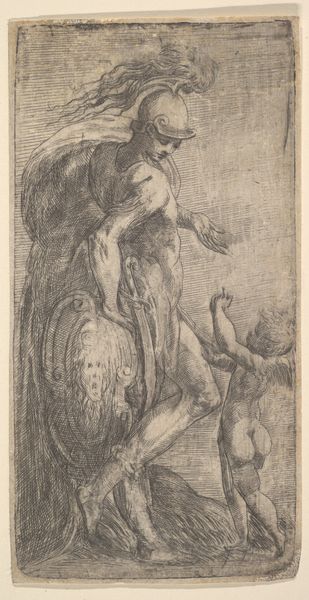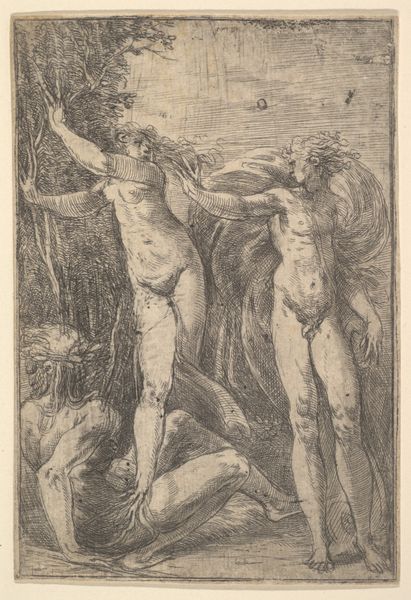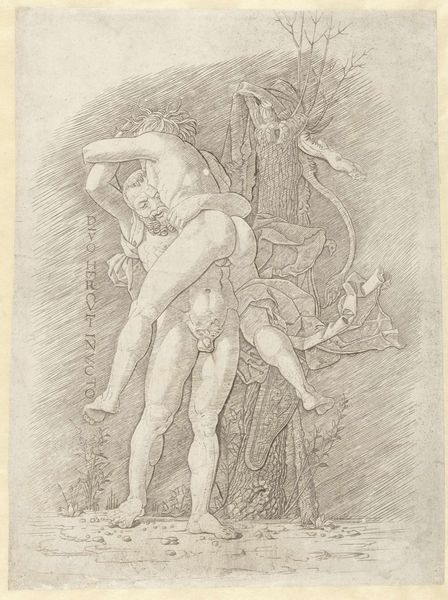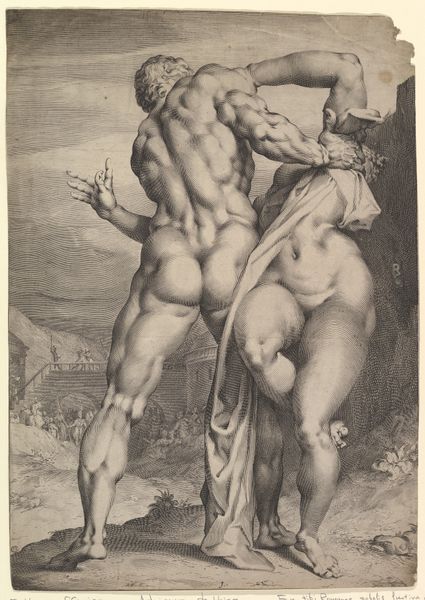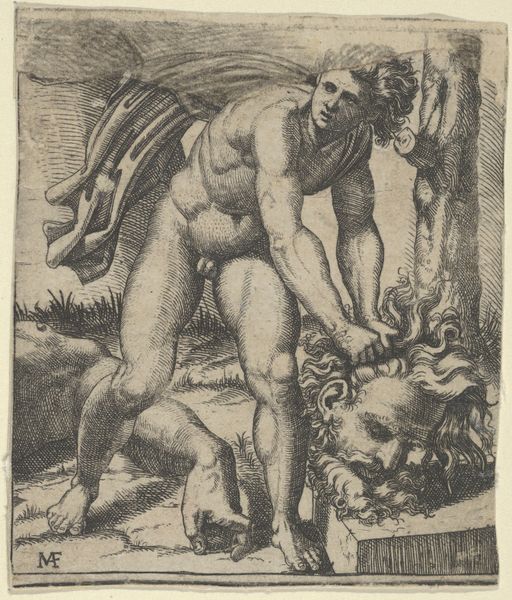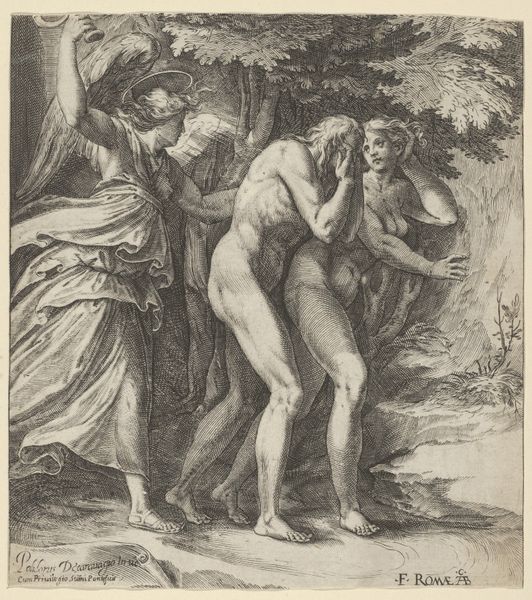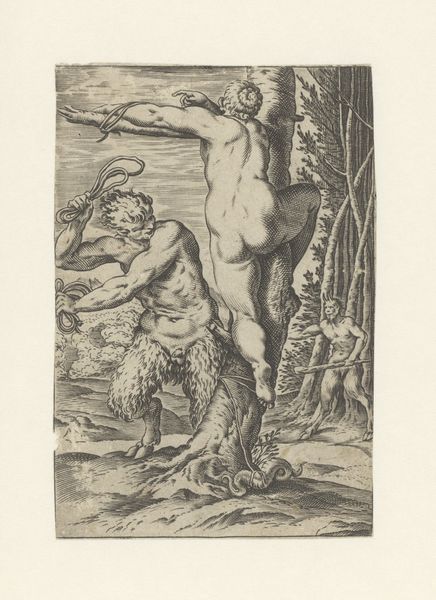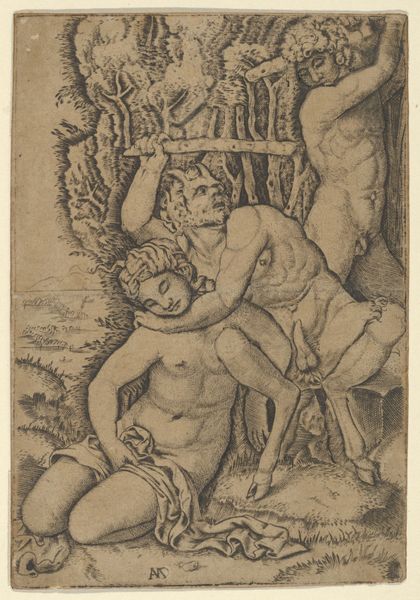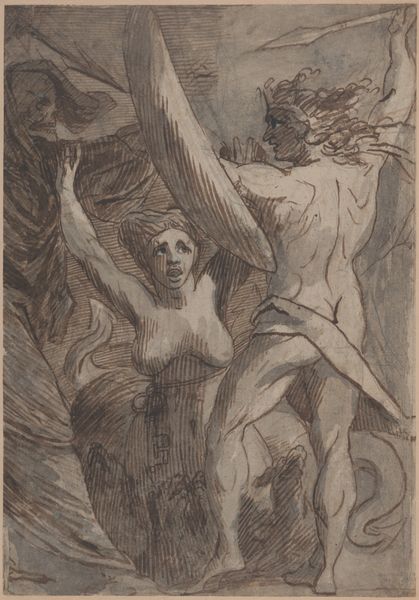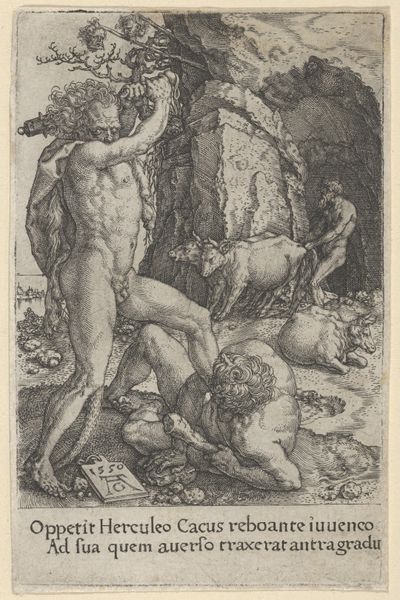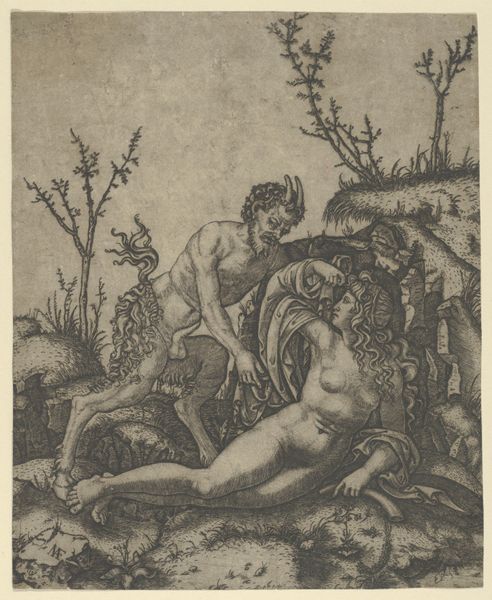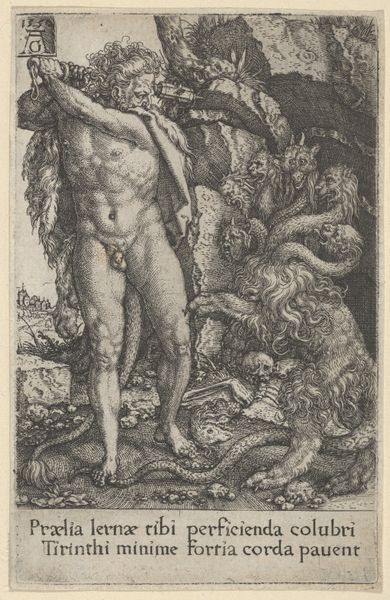
drawing, print, engraving
#
drawing
# print
#
figuration
#
history-painting
#
italian-renaissance
#
nude
#
engraving
Dimensions: Height: 13 15/16 in. (35.4 cm) Width: 9 11/16 in. (24.6 cm)
Copyright: Public Domain
This engraving of Hercules and Antaeus was created by Gian Marco Cavalli in the late 15th century. Made with tools to incise lines into a metal plate, this printmaking method allowed for the wide distribution of images. Think of it as a very early form of mechanical reproduction! Look closely and you’ll see the intricate network of lines creating the figures and the scene. The varying depth and density of these lines produce a remarkable range of tones and textures. The artist's skill is evident in his control over the burin, the tool used to carve into the metal. The labor-intensive process reflects a pre-industrial era, where the value of an artwork was closely tied to the time and skill invested in its creation. This print is not just a picture; it's a testament to the enduring power of craft in an age of increasing mechanization. By focusing on the making of this object, we can appreciate the way material processes contribute meaning to art, and the ways that meaning circulated in early modern Europe.
Comments
No comments
Be the first to comment and join the conversation on the ultimate creative platform.


